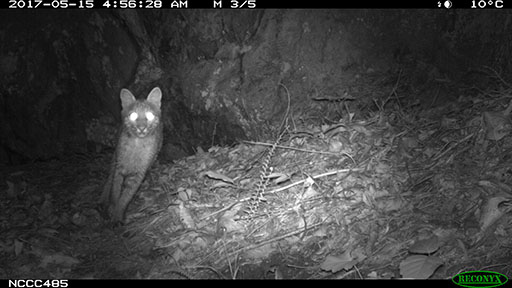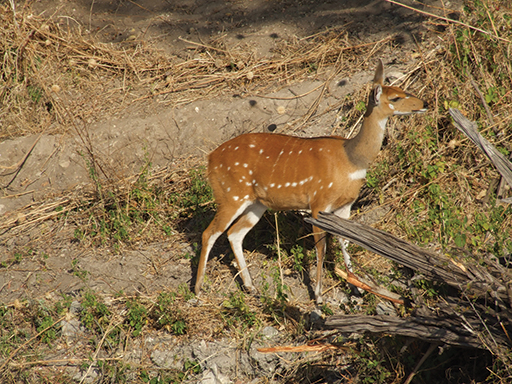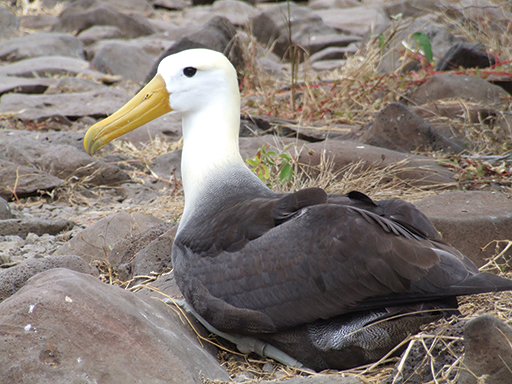4 Technology provides opportunities
Technology advances rapidly and offers new ways to make observations of animals. The eMammal project run by the Smithsonian Institution [Tip: hold Ctrl and click a link to open it in a new tab. (Hide tip)] links scientists and citizen scientists by using digital cameras, called camera traps, to monitor and record wildlife (Figure 5). There are many different designs of camera trap, but the basic mode of operation is that a weatherproof camera is set up in an area likely to have wildlife present and a motion sensor triggers a photograph (or a burst of photographs) whenever there is sufficient movement that could indicate the presence of an animal. The sensitivity of the motion sensor is usually adjustable, and the camera may use infrared light to illuminate the animal without disturbing it with flash photography. Clearly, these automatic cameras have the potential for generating large data sets.
So far, there are 18 countries in which projects are running, with 64 projects in total covering 1950 species. One such project is the Museums Connect eMammal International project, which links museums in the USA, India and Mexico with local schools, helping them to run camera traps from their classrooms. The data that they collect are used to help to understand how mammals respond to human influences in both wild and urban environments. It is hoped that the involvement of schools in this type of project will hopefully encourage an interest in wildlife and conservation in their students. But also that it will promote the idea that citizens can make a substantial contribution to data collection on an international scale.

Figure 5 shows how a large-scale camera-trap survey has been used to validate data produced by non-expert citizen science volunteers. However, it sometimes proves necessary to convince sceptical scientists that reliable data can be produced by non-experts. Here is the abstract of a report produced by another survey (Swanson et al, 2016).
Citizen science has the potential to expand the scope and scale of research in ecology and conservation, but many professional researchers remain skeptical of data produced by nonexperts. We devised an approach for producing accurate, reliable data from untrained, nonexpert volunteers. On the citizen science website Snapshot Serengeti, more than 28,000 volunteers classified 1.51 million images taken in a large-scale camera-trap survey in Serengeti National Park, Tanzania. Each image was circulated to, on average, 27 volunteers, and their classifications were aggregated using a simple plurality algorithm. We validated the aggregated answers against a data set of 3829 images verified by experts and calculated 3 certainty metrics – level of agreement among classifications (evenness), fraction of classifications supporting the aggregated answer (fraction support), and fraction of classifiers who reported ‘nothing here’ for an image that was ultimately classified as containing an animal (fraction blank) – to measure confidence that an aggregated answer was correct.
Overall, aggregated volunteer answers agreed with the expert-verified data on 98% of images, but accuracy differed by species commonness such that rare species had higher rates of false positives and false negatives. Easily calculated analysis of variance and post-hoc Tukey statistical tests indicated that the certainty metrics were significant indicators of whether each image was correctly classified or classifiable. Thus, the certainty metrics can be used to identify images for expert review. Bootstrapping analyses further indicated that 90% of images were correctly classified with just 5 volunteers per image. Species classifications based on the plurality vote of multiple citizen scientists can provide a reliable foundation for large-scale monitoring of African wildlife.

Activity 3 Reliability
Having read the previous abstract, think about the sources of variation in the classification of an image and make a list of them. You might find it useful to look at the Snapshot Serengeti website. You could take the tutorial to see how identification is handled, together with collection of other observations such as number of animals present.
Answer
Obviously, a major source of variability is species identification, and a photograph might not show an animal from the right angle to see key identifying features. In counting how many animals are visible, there may be one large animal in the foreground and a large number in the far distance, leading to different decisions about which ones to count. Similarly, a herd of deer in the foreground would be almost impossible to count accurately. Some images might not show any identifiable animals at all.

